Instruction signs
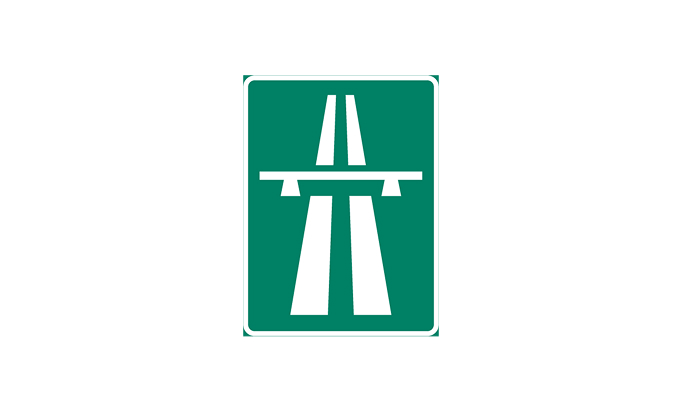
E1 Motorway
The sign indicates that a motorway begins. The distance to the start can be shown on an additional panel. Motorways are designed for higher speeds, usually between 70 and 120 km/h, and have separate lanes for each direction as well as grade-separated intersections. The sign is placed at motorway entrances and where a road transitions into a motorway.
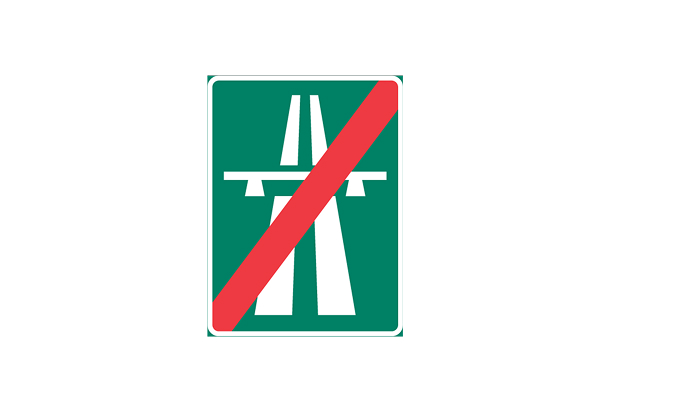
E2 End of motorway
The sign shows that the motorway ends. Traffic rules for motorways cease to apply, and signs often indicate the rules that apply afterward. The distance to the end of the motorway can be shown on an additional panel. However, the sign is not used where a motorway transitions into a freeway.
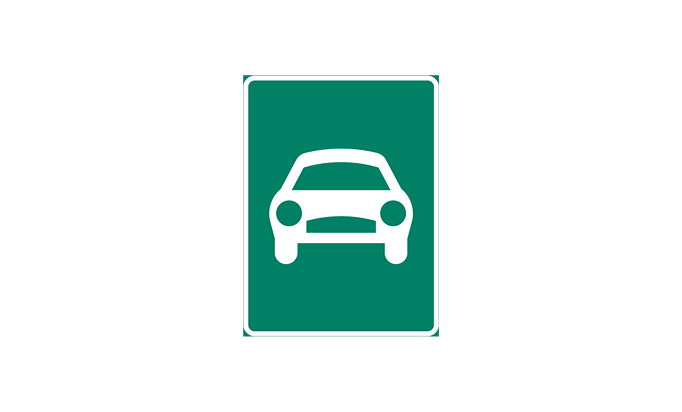
E3 Freeway
The sign indicates that a freeway begins. The distance to the freeway can be shown on an additional panel. The sign does not indicate the speed limit, which is specified separately. Freeways have a simpler design than motorways but are also adapted for smooth and safe traffic.
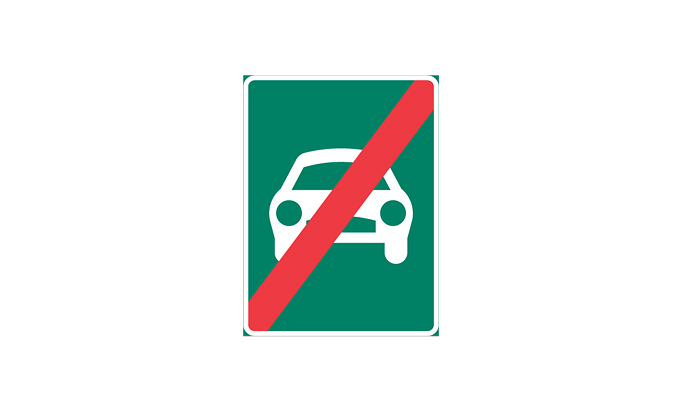
E4 End of freeway
The sign shows that the freeway ends. Traffic rules for freeways cease to apply, and signs indicate the rules that apply afterward. The distance to the end of the freeway can be shown on an additional panel. However, the sign is not used where a freeway transitions into a motorway.

E5 Built-up area
The sign indicates that a built-up area begins. The name of the local place can be included on the sign, and a speed limit of 50 km/h usually applies. However, the maximum allowable speed is normally indicated by a separate speed limit sign.
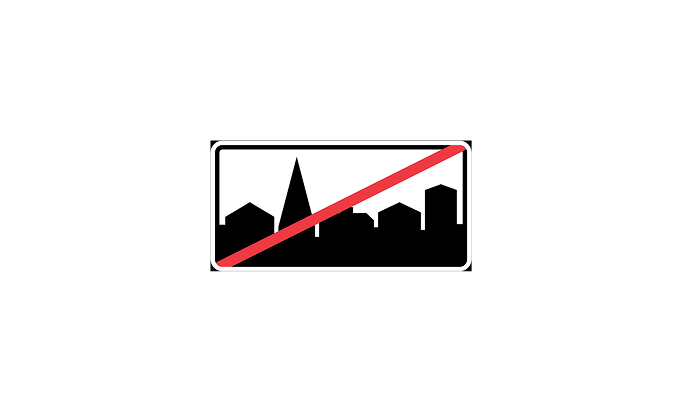
E6 End of built-up area
The sign indicates that the built-up area ends. The name of the local place can be included. After this sign, speeds between 70 and 100 km/h usually apply, as indicated by separate speed limit signs.
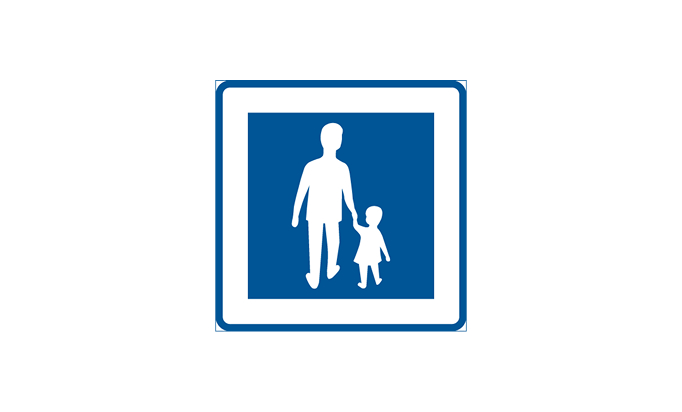
E7 Pedestrian street
The sign indicates a pedestrian street where motor vehicles are generally not allowed. Exceptions apply for deliveries, medical transports, and certain resident transports. Pedestrians always have priority, although vehicles may cross the pedestrian street.
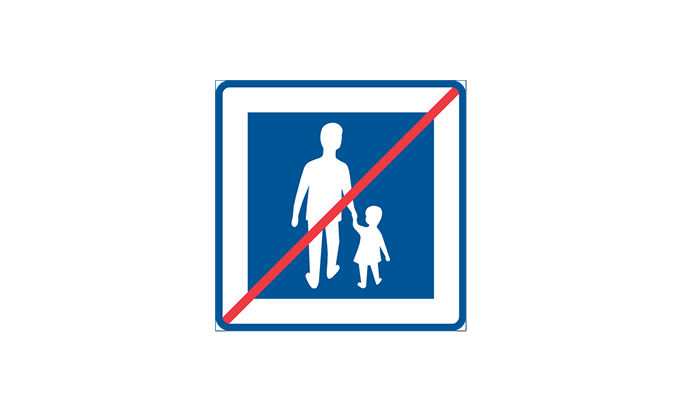
E8 End of pedestrian street
The sign indicates that the pedestrian street ends. It is not always placed if it is otherwise clear that the pedestrian street ends.
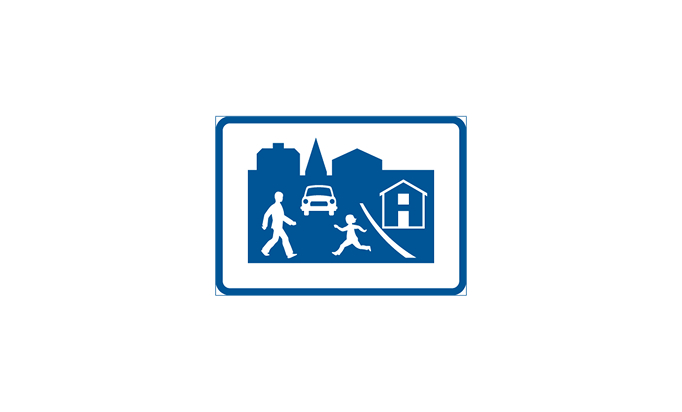
E9 Home zone
The sign indicates the beginning of a home zone. Speeds may not exceed walking pace, and pedestrians have priority. Parking is only permitted in marked parking areas.
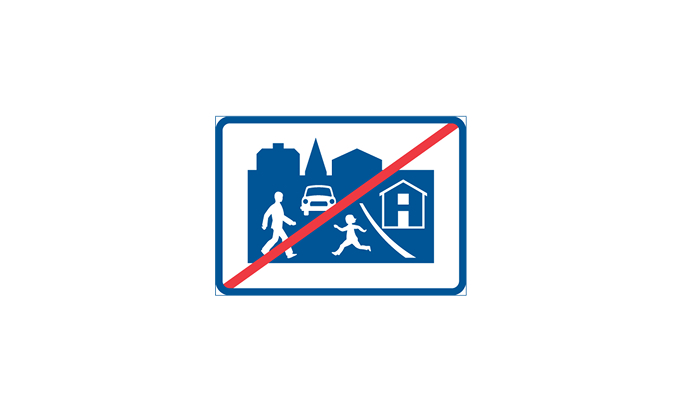
E10 End of home zone
The sign indicates that the home zone ends. After this, a speed limit of 50 km/h usually applies unless otherwise indicated. The sign is not always installed if it is otherwise clear that the zone ends.
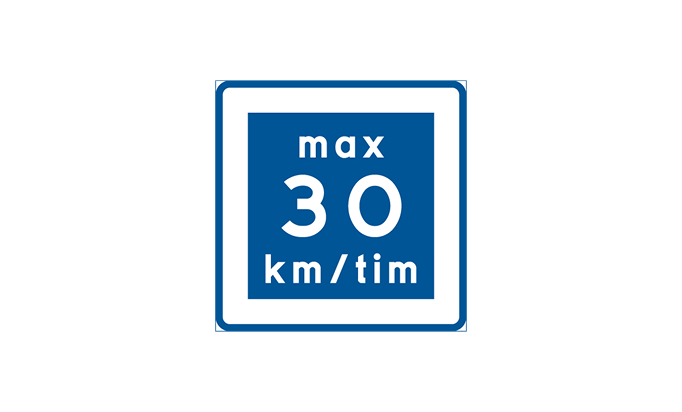
E11 Recommended lower speed
This sign recommends a speed lower than the maximum allowable speed to enhance safety, for example, at speed bumps or in poor road conditions. Driving slower than the maximum allowable speed is permitted, but never faster than the maximum allowed.

E12 End of recommended lower speed
The sign indicates that the recommendation for a lower speed ends. Unless otherwise indicated, the normal speed limit for the road section applies.

E13 Recommended maximum speed
The sign indicates a temporarily recommended maximum speed, often due to temporary conditions such as weather or roadwork. The recommended speed is always lower than the maximum allowable speed.
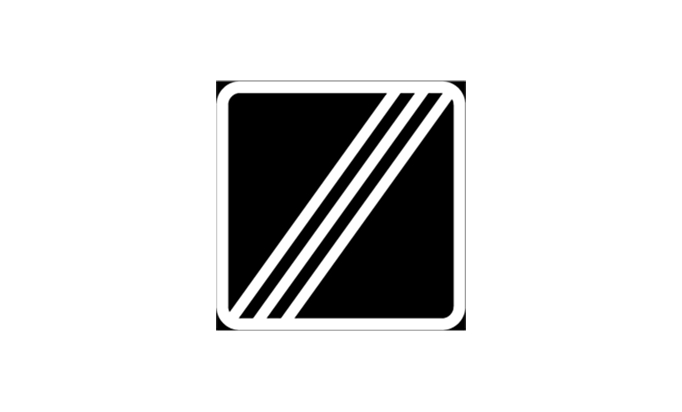
E14 End of recommended maximum speed
The sign indicates that the recommendation for the maximum speed ends and that the previously applicable conditions apply.
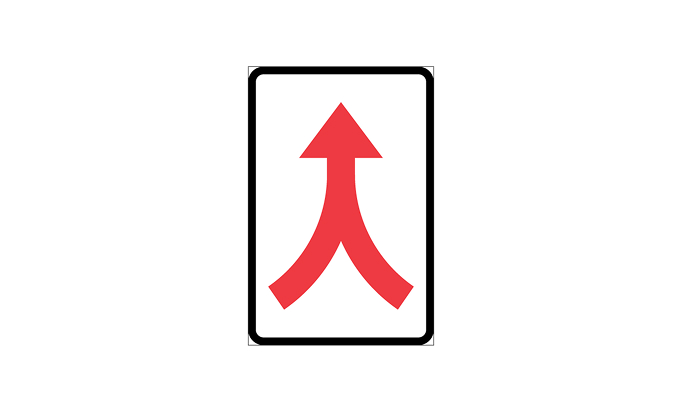
E15 Merging lanes ahead
The sign indicates that two lanes or carriageways merge into one. Drivers should adapt to the new conditions and use the zipper merge principle, where drivers alternate for smooth traffic. The distance to the merge can be shown on an additional panel.

E16 One-way traffic
The sign indicates that traffic on the road is one-way in the direction of the arrow. The sign is placed along the road and shows the permitted direction of travel.
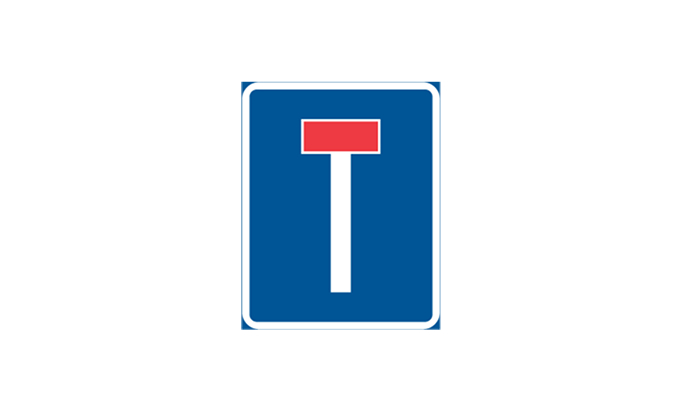
E17 No through road
The sign means that the road has no passage through, and drivers should only proceed if they have a reason to visit the location the road leads to. If bicycles and Class II mopeds can pass through, this is indicated with a symbol (S8).

E18 Passing place for narrow road
The sign indicates a place where vehicles can pass each other, usually due to narrow roads. Parking at these places for passing is prohibited.
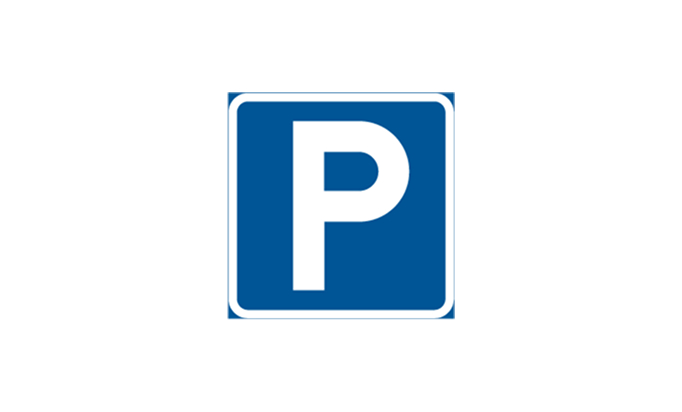
E19 Parking
The sign indicates that parking is permitted from where the sign is placed and under the conditions stated, often on additional panels. Parking is not allowed where it is prohibited under general traffic rules unless otherwise stated by signs or additional panels.
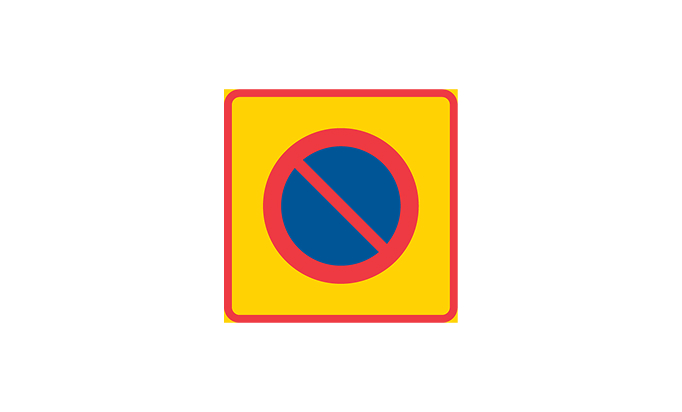
E20 Zone sign
The sign indicates the beginning of an area where special rules apply. Additional panels can specify exceptions or additional rules. The sign remains valid until a new area begins or the sign E21 "End of zone" is posted.
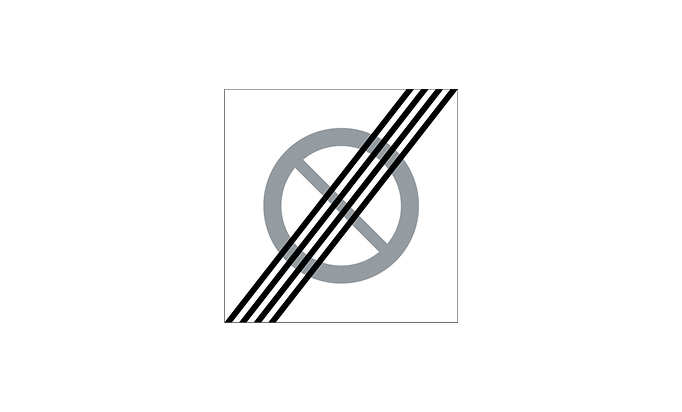
E21 End of zone
The sign indicates that the rules that applied when an area sign (E20) was posted, such as certain prohibitions or permissions, no longer apply.

E22 Bus stop
The sign indicates a stop for public transport or school buses. Timings and additional information may also be provided as needed.

E23 Taxi
The sign indicates a parking space reserved for taxis, often located near a parking lot.

E24 Automatic traffic surveillance
The sign indicates that the area or road section is monitored with automatic cameras to check traffic rules, fees, or taxes.
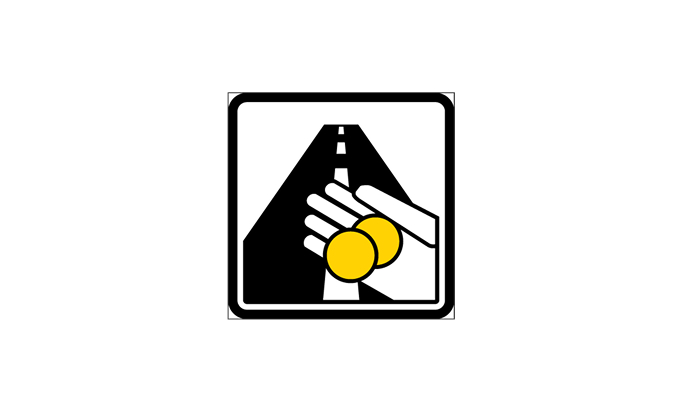
E25 Toll road
The sign indicates that a fee must be paid to drive on a certain road or in a specific area.
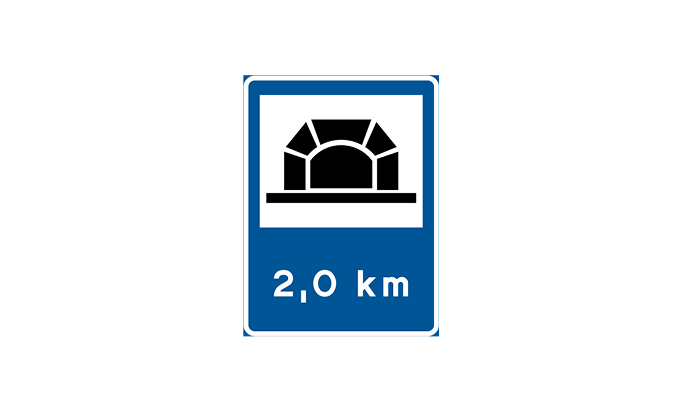
E26 Tunnel
The sign indicates a tunnel ahead. The tunnel's name and length may also be indicated on the sign. The sign is often repeated every kilometer, showing the remaining distance to the tunnel.

E27 Emergency stopping place
The sign indicates a place where vehicles can stop in case of a breakdown or engine failure. The distance can be shown on an additional panel. Symbols for an emergency telephone and fire extinguisher may be included on the sign.
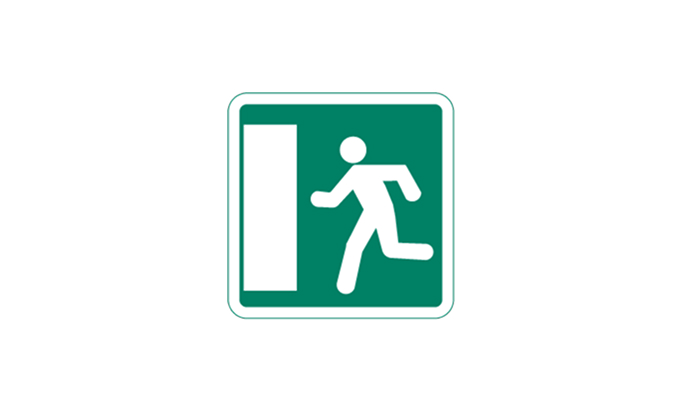
E28 Emergency exit
The sign shows an emergency exit for pedestrians, and these signs are usually installed in tunnels.

E29 Emergency escape route
The sign indicates the direction and distance to the nearest emergency exit. The sign is placed at intervals of no more than 25 meters.
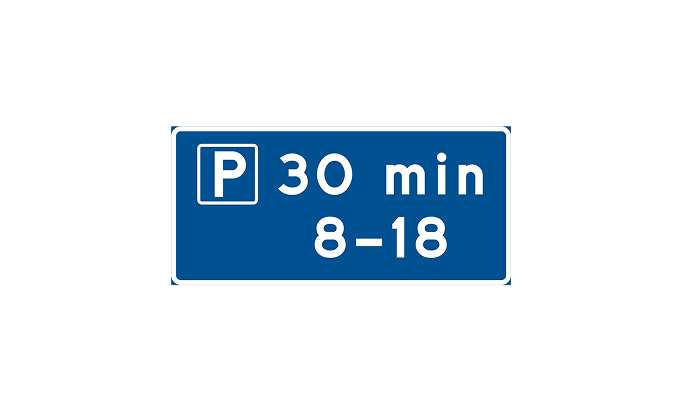
E30 Special parking regulations
The sign indicates that there are specific conditions for parking at the location. Conditions can be specified on additional panels or through the use of other signs. This sign can also indicate deviations for other signs.
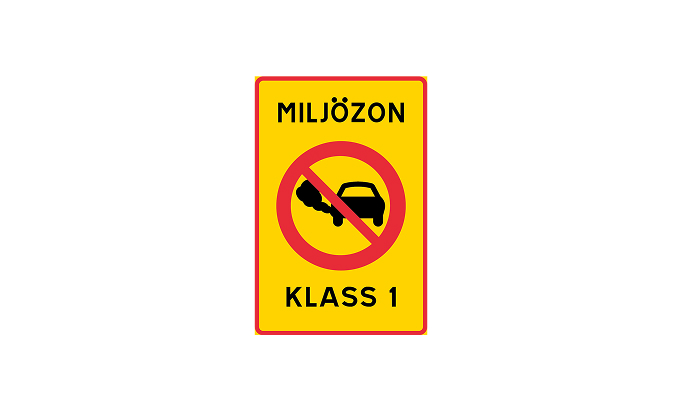
E31 Low emission zone
The sign indicates that special rules apply within a so-called low emission zone. Rules may include restrictions on certain types of vehicles. If the sign is used to indicate an upcoming low emission zone, the distance to the zone is shown on an additional panel. The sign may be incorporated into a location sign.
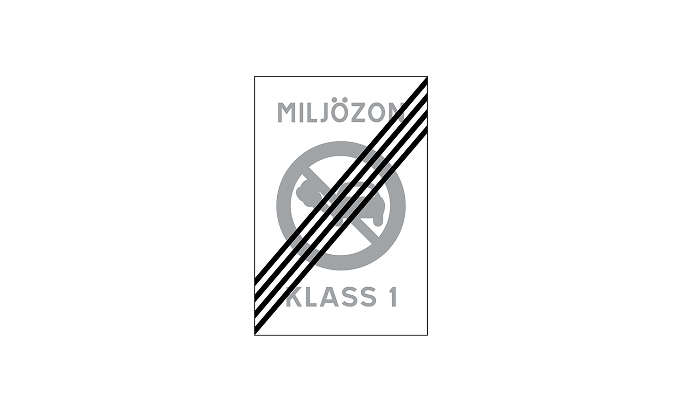
E32 End of low emission zone
The sign indicates that a low emission zone ends.
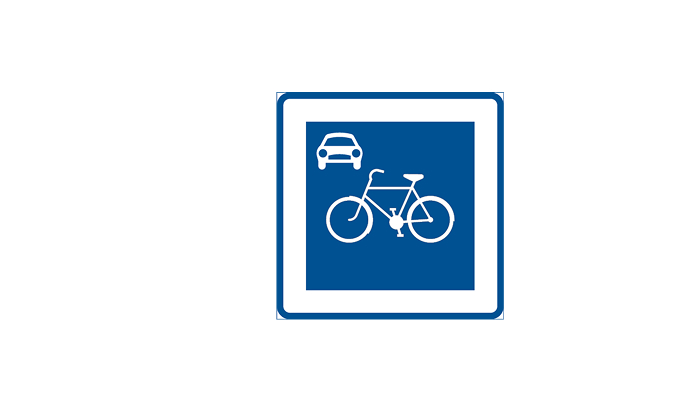
E33 Bicycle street
The sign indicates that special rules for a bicycle street apply. The speed limit is 30 km/h, and motor vehicles must adapt to bicycle traffic. Parking is only allowed in marked parking areas. Drivers entering a bicycle street from another road must give way to vehicles on the bicycle street.
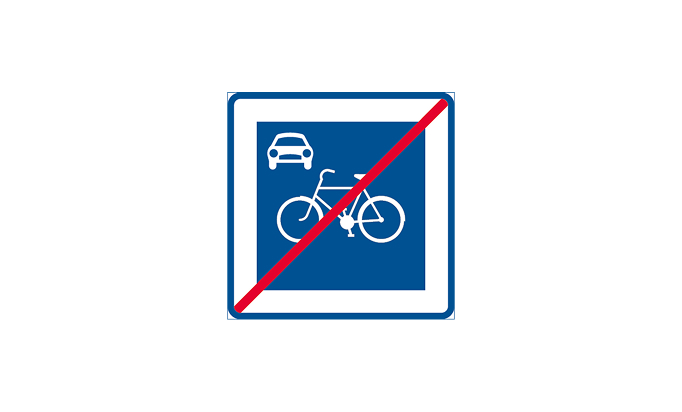
E34 End of bicycle street
The sign indicates that the bicycle street now ends.